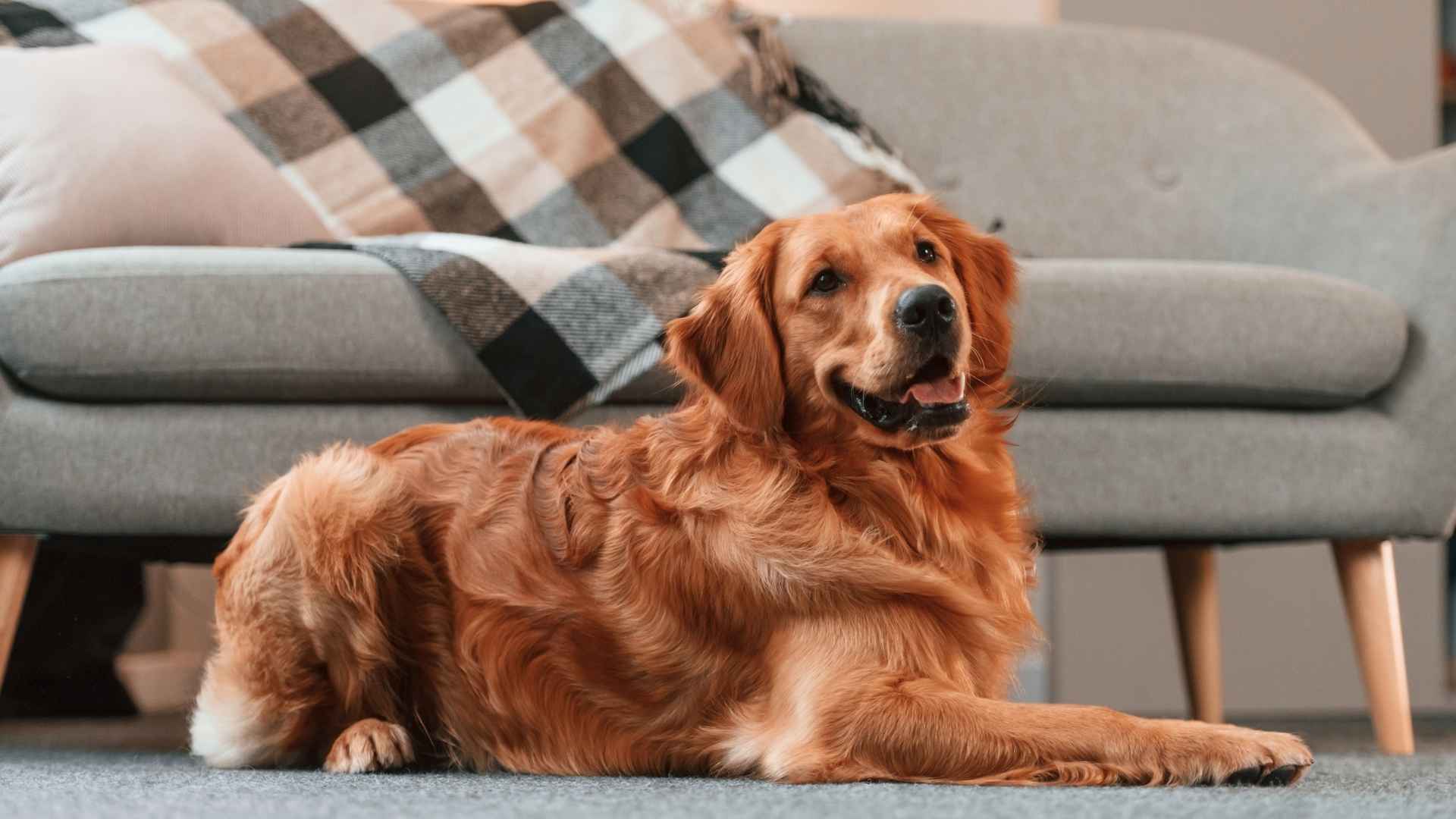Did you know dogs have been living alongside humans in confined spaces since ancient Roman times? That’s right—long before modern apartment complexes existed, our four-legged friends were already mastering the art of cozy companionship. Today, with urban living on the rise, the demand for dogs that not only fit in small spaces but also offer unwavering loyalty is higher than ever.
But here’s the good news: size doesn’t determine devotion. Some of the most faithful, sweet-natured dogs are perfectly content in compact city apartments, provided they’re showered with love and a little daily exercise. Whether you’re a solo city dweller or a family tucked into a high-rise, choosing a loyal dog who thrives in apartment living can make all the difference in your daily life.
In this blog, we’ll explore the most loyal dog breeds for apartment dwellers that combine steadfast devotion with apartment-friendly traits—your perfect pup might just be waiting below.
Loyal Apartment Dog Breeds
1. French Bulldog
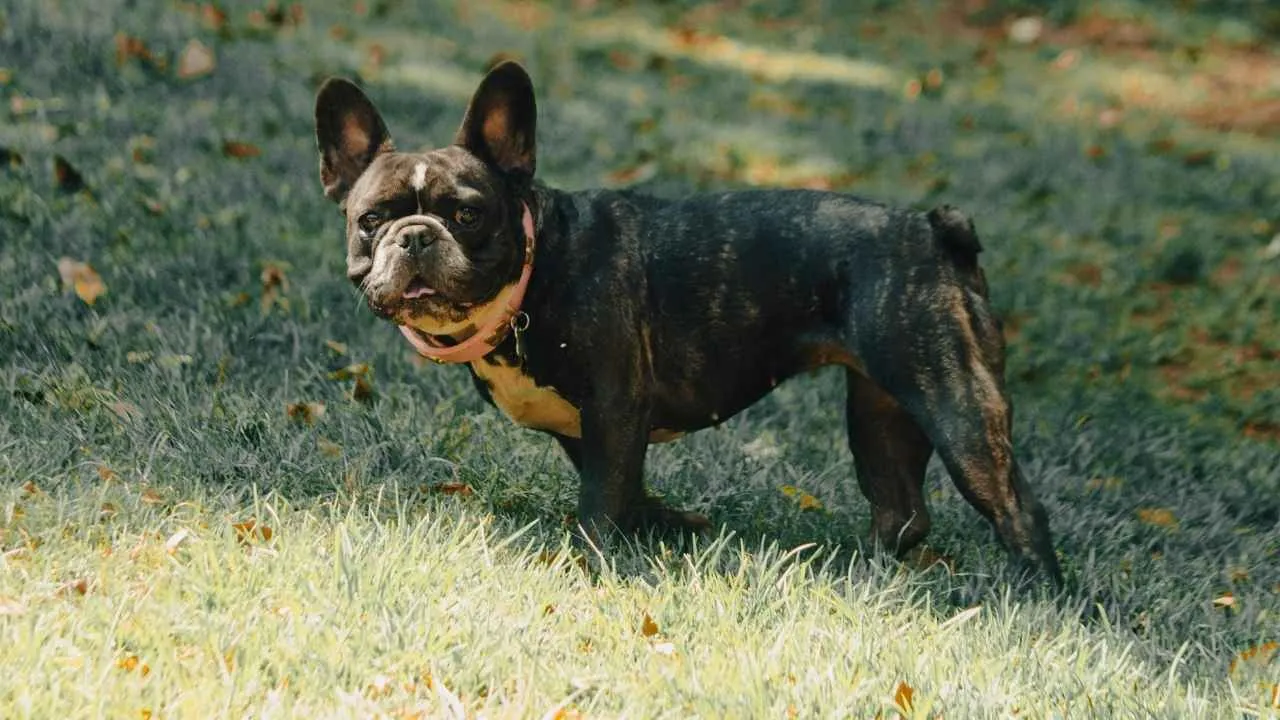
The French Bulldog is a beloved small dog breed known for its distinctive “bat ears” and compact, muscular body. With a playful and alert nature, Frenchies are perfect for city living, as they require minimal exercise and get along well with people and pets.
French Bulldogs have a short, smooth coat that sheds minimally, and care, such as weekly brushing, helps maintain their health. Their facial folds need to be kept clean and dry, and their nails should be trimmed regularly. These dogs are low-maintenance in terms of grooming, making them a convenient choice for busy owners.
As a brachycephalic breed, French Bulldogs have short muzzles, which makes them more susceptible to breathing issues. This means owners should be mindful of their exercise routine, ensuring that the dog doesn’t overexert itself, especially in hot weather.
Health-wise, French Bulldogs are prone to several issues, including breathing problems and more than 20 common health conditions compared to other breeds. Many of these health issues require surgical intervention, and due to their sensitivity to anesthesia, surgery carries additional risks.
Interestingly, most French Bulldogs are born through artificial insemination and cesarean sections due to their physical structure, making their breeding process unique.
The breed, despite its association with France, actually originates from England during the Industrial Revolution. It was in France that the French Bulldog became popular, especially among lace workers, who brought the dogs to northern France. These small, sturdy dogs were then crossbred with other breeds to achieve the iconic look we know today, becoming a favorite among city dwellers.
2. Bichon Frise
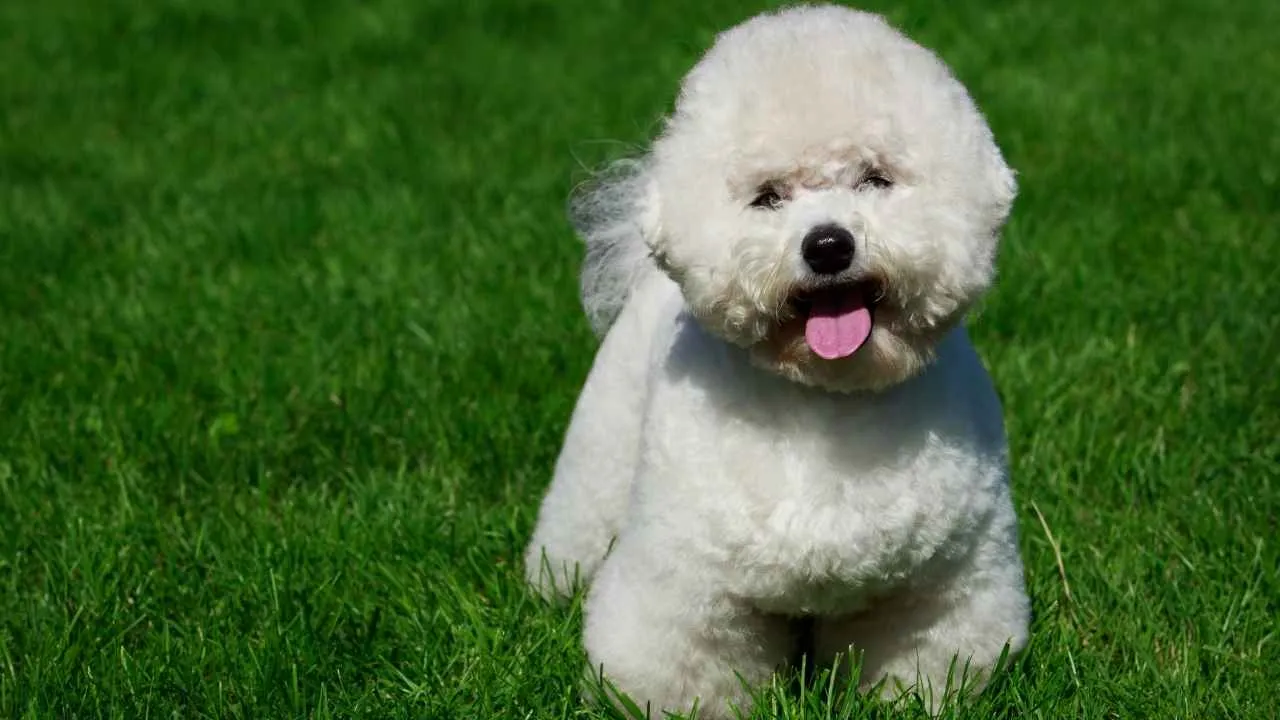
The Bichon Frisé is an ideal companion for the apartment lifestyle, thanks to its small size and friendly nature. Standing between nine to 12 inches tall and weighing 12 to 18 pounds, they are compact and adaptable.
With moderate energy levels and a low barking tendency, they don’t require extensive exercise, making them perfect for smaller living spaces. Their minimal shedding also makes them an excellent choice for allergy sufferers.
Known for their fluffy, curly white coat, Bichon Frisés are often described as resembling “living stuffed animals.” These affectionate, people-oriented dogs love to be around their owners and can be found snuggling in their laps. Their cheerful disposition makes them great companions for families and individuals alike.
Routine grooming is essential for Bichon Frisés due to their continuously growing, curly coat. Regular brushing, at least two to three times per week, helps prevent mats and tangles, while haircuts every four to six weeks are necessary to keep their coat looking neat. Baths are recommended, especially to maintain the cleanliness of their white fur, which can easily show dirt and tear stains.
Bichon Frisés are known for their sociable nature and get along well with other dogs, making them suitable for multi-pet households.
While Bichons are often labeled as a hypoallergenic dog breed due to their minimal shedding, it’s important to note that they still produce dander, saliva, and hair, which may trigger allergic reactions in sensitive individuals. Their dense coat traps many of these allergens, reducing the spread of hair, but allergy sufferers should still be cautious.
3. Pug
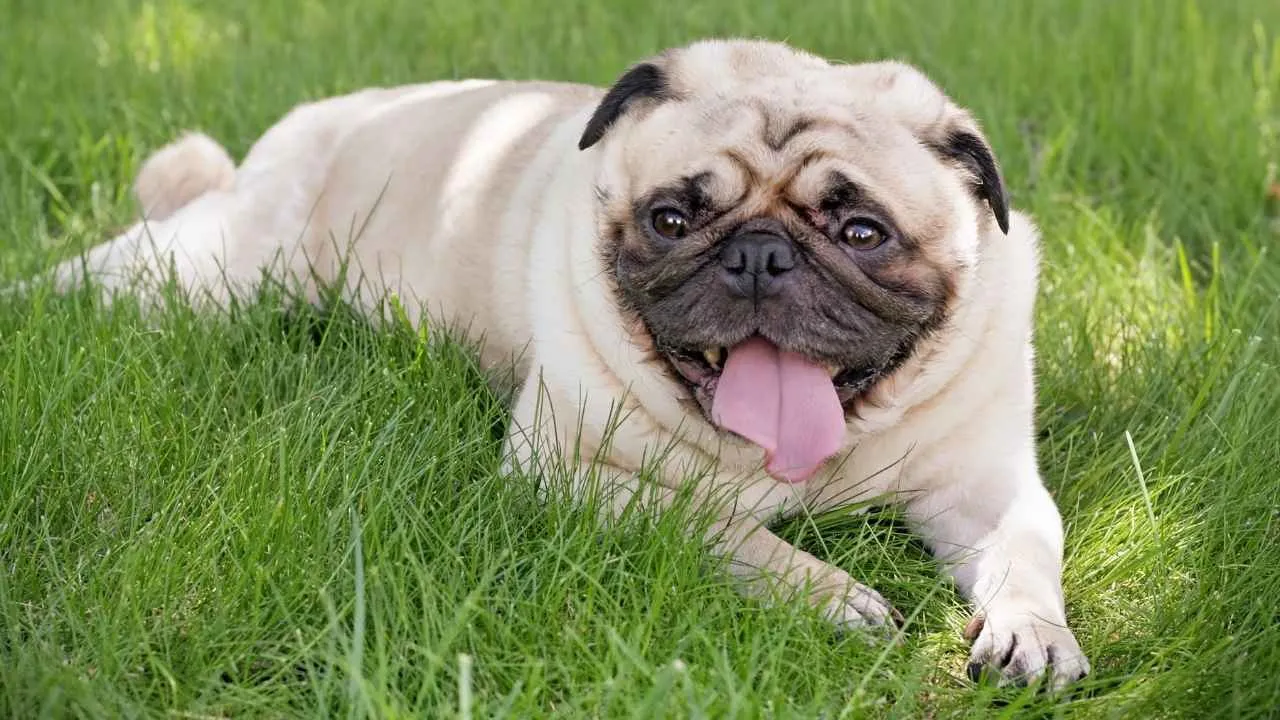
Pugs are one of the world’s oldest and most cherished dog breeds, originating in ancient China around 400 B.C. They were prized by Chinese emperors and even kept by Buddhist monks in Tibetan monasteries.
Over time, their popularity spread across continents, becoming royal companions in Europe and even serving a heroic role for Prince William of Orange. These dogs were bred specifically to be lap companions, which explains their loyal, attention-seeking, and big personalities.
Pugs thrive on human interaction and enjoy being the center of attention. Their small size and friendly nature make them ideal for children, although supervision is recommended during playtime. Pugs are food lovers, so managing their diet and ensuring they stay active is crucial to prevent obesity and maintain their health.
Despite being intelligent and quick to learn, Pugs can be a bit stubborn. Training them requires patience, consistency, and a positive, gentle approach. They respond well to puppy classes and benefit from early socialization. These dogs are particularly sensitive to tone, so encouragement and treats go a long way in reinforcing good behavior.
Daily exercise is essential, especially given their tendency to gain weight. While they’re content lounging indoors, Pugs still need around an hour of activity each day. Games like tug-of-war or short walks are ideal. However, due to their brachycephalic (short-muzzled) anatomy, avoid strenuous activity in hot weather as they can overheat easily.
Their iconic wrinkled faces aren’t just cute—they were deliberately bred to resemble the Chinese character for “prince.” These features, along with their round eyes and charming expressions, have contributed to their lasting popularity.
4. Cavalier King Charles Spaniel
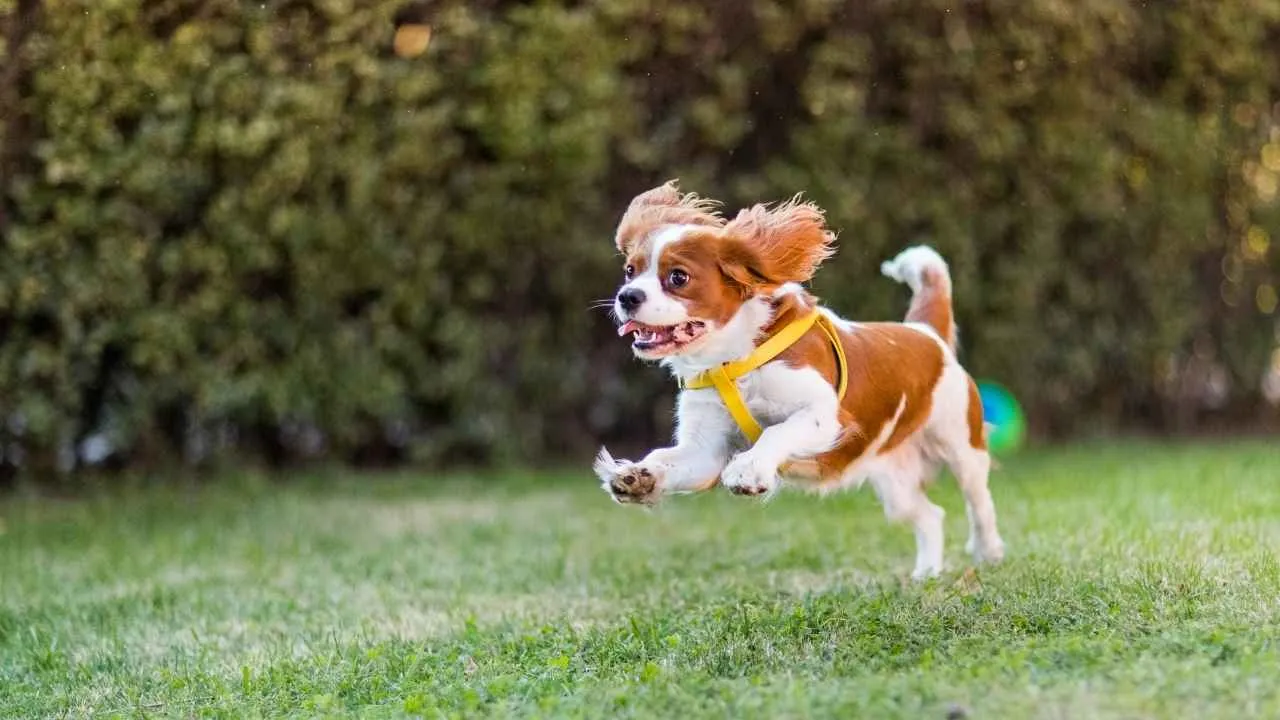
The Cavalier King Charles Spaniel is a small, well-proportioned breed with a silky medium-length coat, gentle expression, and characteristic feathering on its feet. Its long ears and tail complement its elegant look, and the breed is recognized in four color varieties: Blenheim, ruby, black and tan, and tricolor.
The breed’s name and legacy trace back to King Charles II of Britain, whose fondness for the breed helped cement its status as a royal companion.
This breed’s temperament is as charming as its appearance. Cavaliers are affectionate, friendly, and well-suited to both families and individuals. They adjust easily to different living environments and enjoy spending time with their people. Despite their dignified looks, they are playful and gentle, making them excellent pets for children and seniors alike.
Cavaliers are content with daily walks and a bit of playtime, whether indoors or outdoors. Their spaniel roots make them curious about nature—they enjoy sniffing trails, chasing birds, and even swimming. They are also suitable for canine sports like agility, obedience, and nose work, which stimulate their minds and bodies.
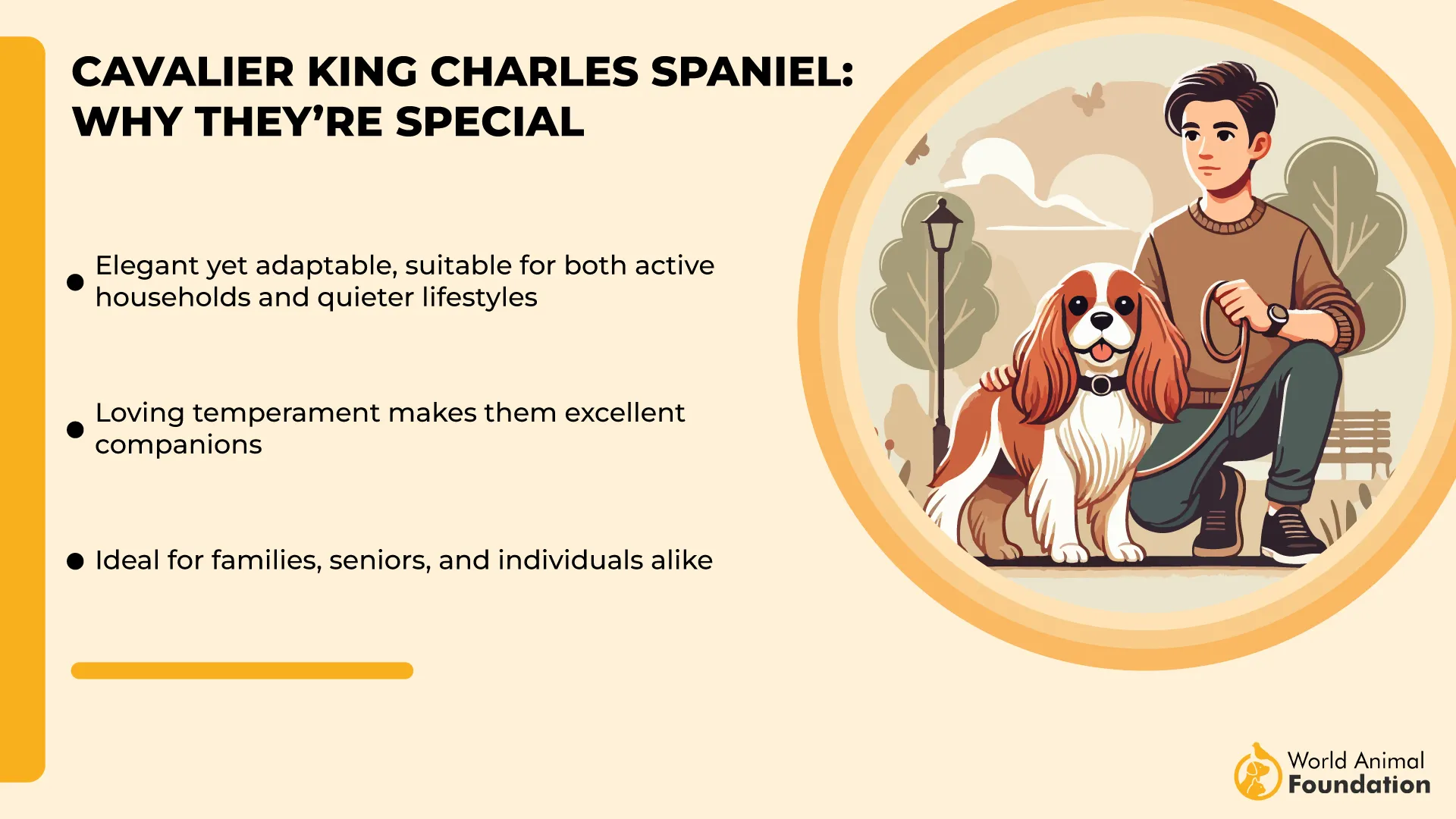
Although social by nature, Cavaliers do best in safe settings like size-appropriate dog parks. They are not aggressive and lack the physicality to defend themselves against larger breeds, so supervision and caution are advised during social outings with other dogs.
Britannica states that the breed’s popularity spans beyond royalty. In modern history, U.S. President Ronald Reagan gifted a Cavalier to his wife, and the dog even participated in White House traditions. Their refined look and delightful personality have made them a favorite among dog lovers worldwide.
5. Shih Tzu
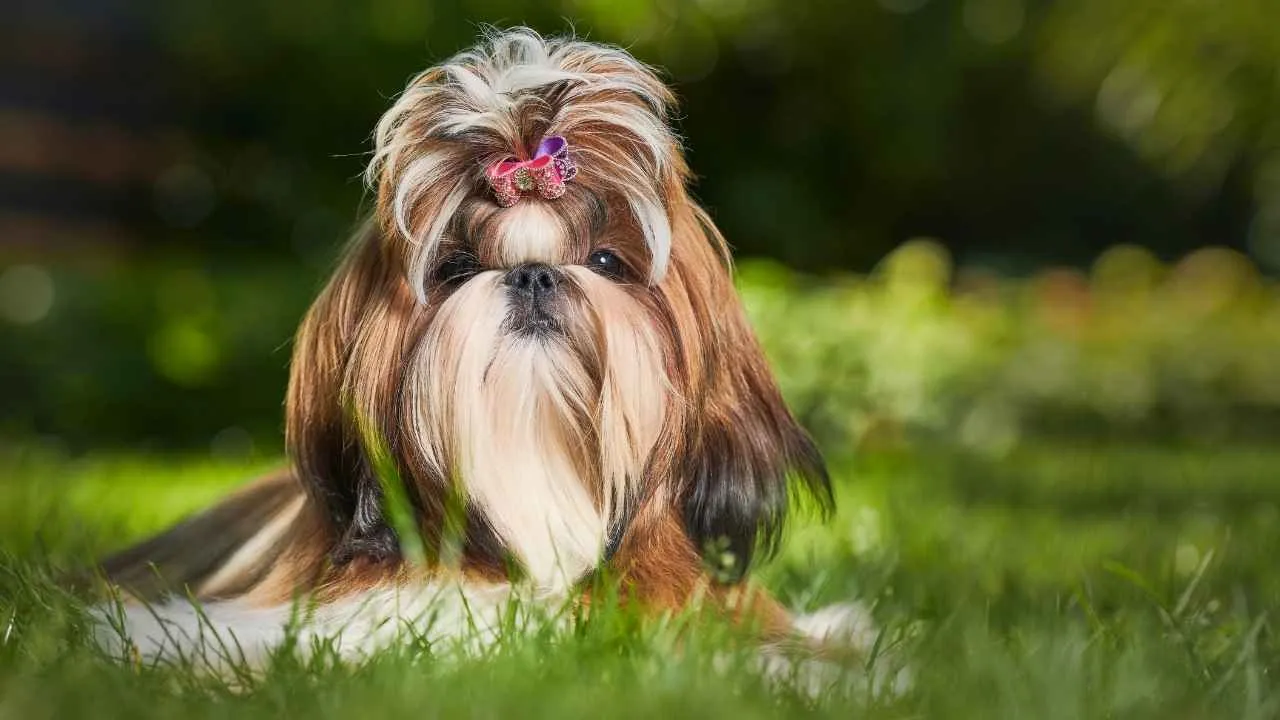
The Shih Tzu is an ancient Tibetan breed, originally developed from the Pekingese and Lhasa Apso. Revered for its lion-like appearance—reflected in its Chinese name, shih-tzu kou or “lion dog”—this small companion has been treasured for over a thousand years, particularly among Tibetan monks and Chinese royalty. The lion, a Buddhist symbol, underscores the breed’s spiritual and cultural significance.
Bred as companion animals, Shih Tzus thrive on human attention and form strong bonds with their owners. They’re happiest in homes where someone is present most of the day. While sociable and extroverted with family, they can be reserved around strangers, so early socialization is essential.
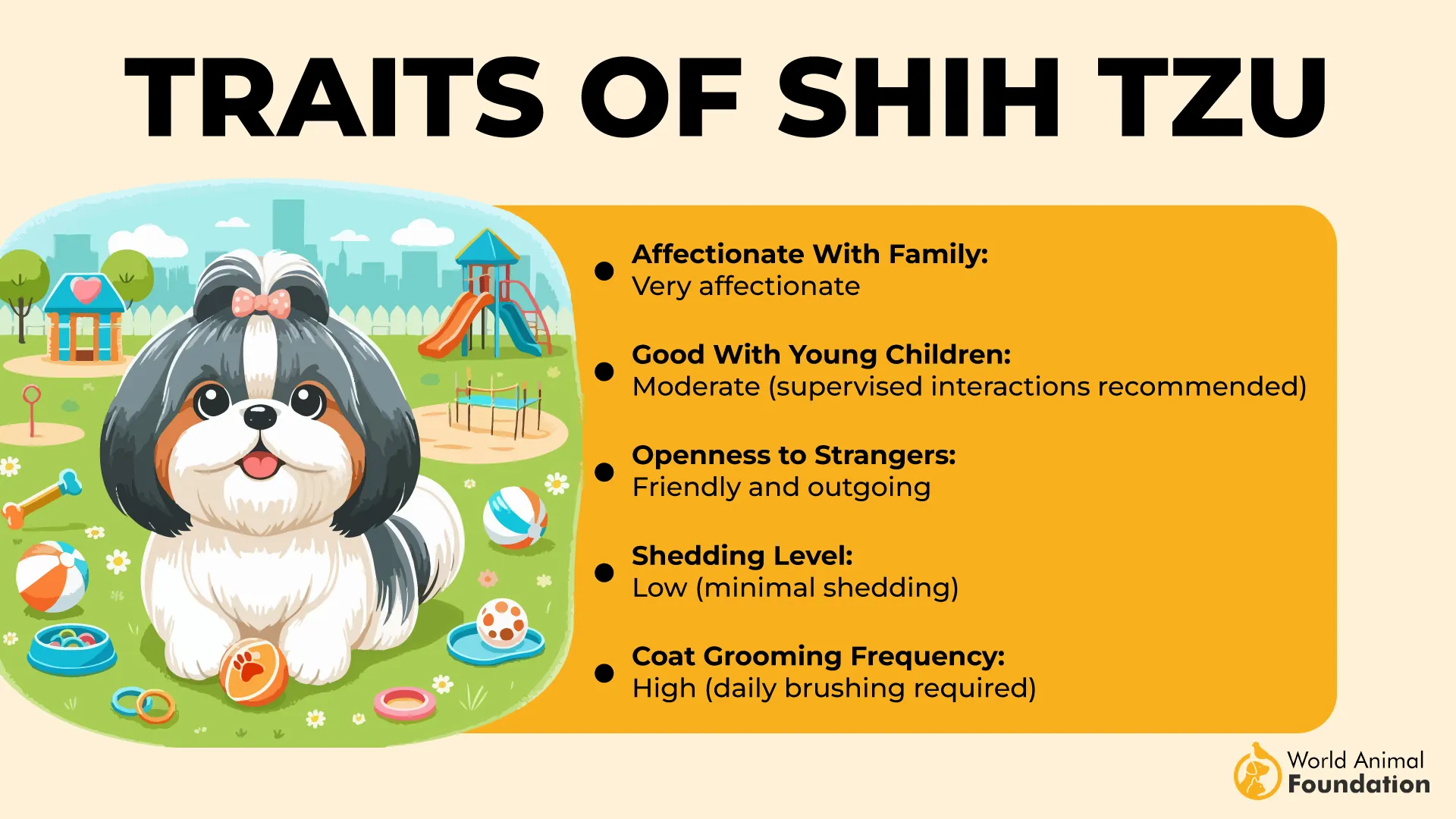
Shih Tzus generally get along with other pets if introduced properly. However, their small size and low tolerance for rough handling make them better suited to households with older, gentle children. They may react defensively if play becomes too rowdy.
Their distinctive appearance includes a dense double coat, long flowing hair, a full, plume-like tail, and a prominent fringe often styled into a topknot. Although their luxurious long coat may look high-maintenance, they shed less than expected. Still, professional grooming is a major part of their care.
Shih Tzus have moderate exercise needs and adapt well to apartment living or small yards. Daily walks and indoor play are usually enough to meet their needs. Due to their short muzzles and small size, they are sensitive to temperature extremes and should be protected from both hot and cold weather.
6. Boston Terrier
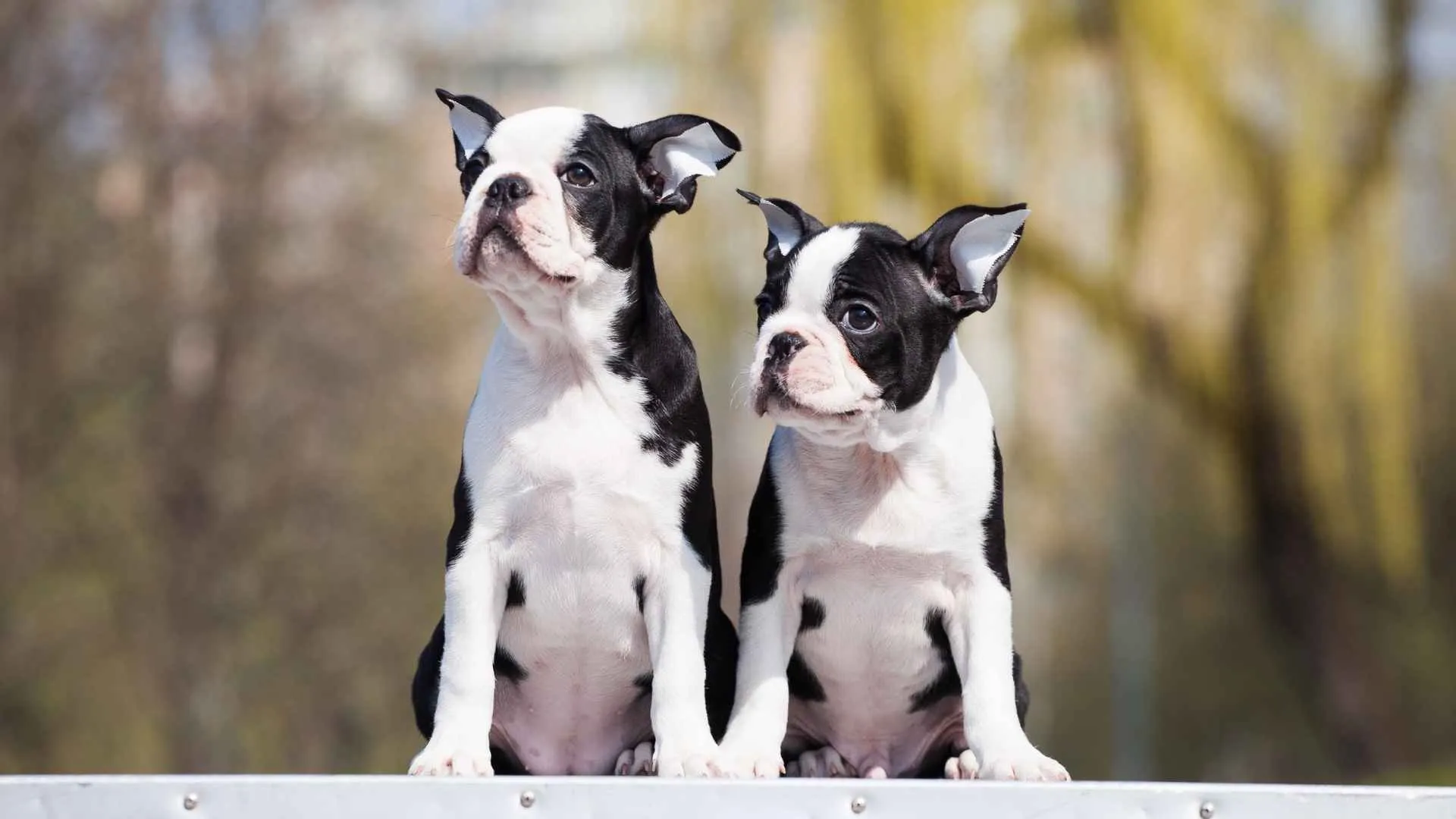
The Boston Terrier, often called the “American Gentleman” for its tuxedo-like black and white coat, is a charming small breed developed in the United States as a companion dog. Known for their cheerful personalities, these dogs make ideal family pets and adapt well to various lifestyles, including apartment living. Their bright, curious nature means they love engaging with people and their surroundings.
Physically, Boston Terriers are compact and well-proportioned, standing around 16 inches tall and weighing between 12 to 25 pounds, depending on the individual. Their square heads, erect ears, short muzzles, and naturally short tails give them a distinctive, balanced look. The breed’s signature square frame and strong limbs add to their dapper appearance.
While generally healthy, Boston Terriers are prone to several medical concerns. As noted by PetMD, eye problems such as cataracts, corneal ulcers, and glaucoma are common, so regular check-ups and daily eye care are essential.
Training Boston Terriers is relatively easy, thanks to their intelligence, but they can be sensitive. They respond best to positive reinforcement and gentle guidance. Despite being good learners, some individuals may exhibit traits like stubbornness or clinginess, which require patient handling.
The breed’s anatomy brings certain quirks: narrow nostrils and small trachea make them prone to snoring and reverse sneezing, especially in humid environments. While not dangerous, these traits may require owners to monitor breathing and comfort during warmer months.
On the upside, Boston Terriers shed minimally and are typically quiet dogs that rarely bark. They have an excellent reputation for getting along with kids and are well-suited to both first-time owners and experienced dog lovers looking for a loyal, entertaining companion.
7. Cesky Terrier
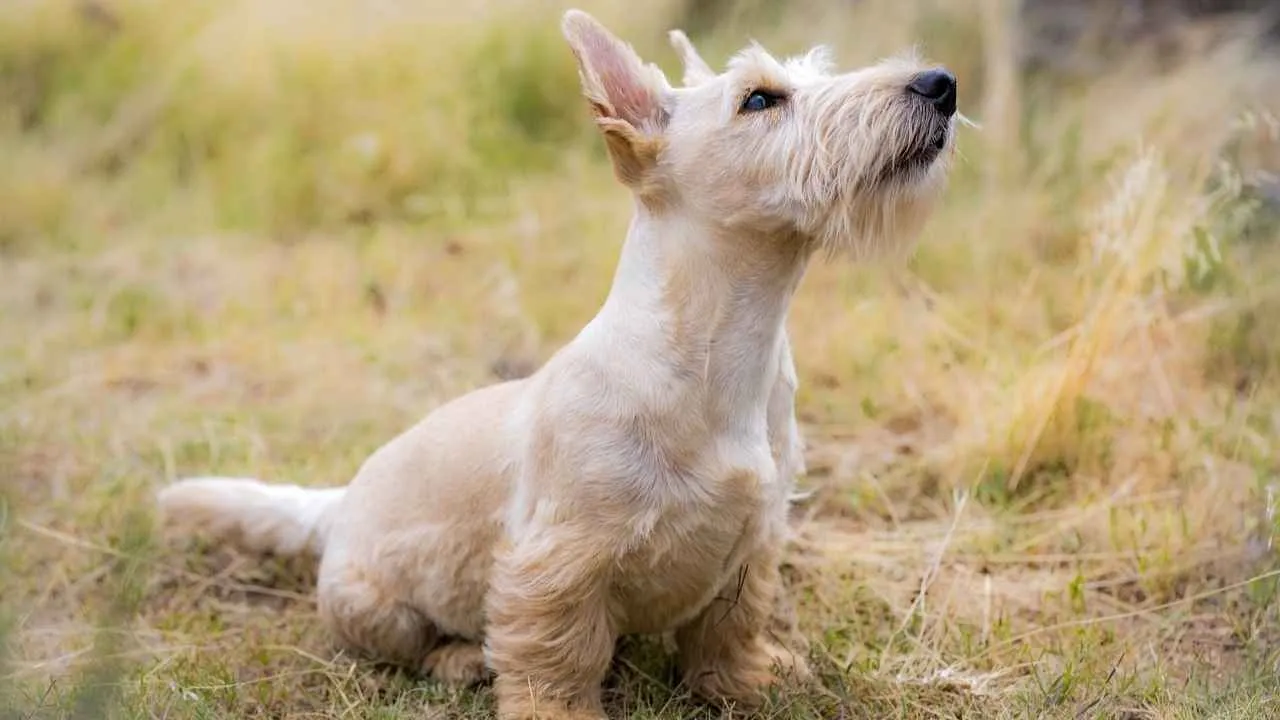
The Cesky Terrier, also known as the Czech or Bohemian Terrier, is a rare yet delightful breed originally developed in Czechoslovakia. Created in the late 1940s by hunter Frantisek Horak, the breed was designed to be both a capable hunting companion and a devoted family dog. A mix of Scottish and Sealyham Terriers, the Cesky brings together toughness in the field with affectionate companionship at home.
Compact and muscular, these terriers stand under 13 inches and are known for their elegant, elongated bodies, wedge-shaped heads, and silky, slightly wavy coats. Born black or chocolate brown, Cesky puppies gradually transition to shades of gray, ranging from dark charcoal to pale platinum, over several years. Facial furnishings and drop ears give them a distinctively stylish appearance.
Despite their roots as working dogs, Ceskys are more laid-back than most terriers. They’re intelligent, eager to please, and respond well to training. While they remain prey-driven and alert, they don’t tend to be overly vocal, making them excellent watchdogs without becoming a nuisance.
This breed thrives in a family setting, bonding closely with its people and generally doing well with children and other pets. However, like all dogs, Ceskys benefit from early socialization. Their calm and adaptable nature makes them suited to both urban and rural living, provided they receive enough mental and physical stimulation.
Introduced to the United States in the 1980s and officially recognized by the American Kennel Club in 2011, Ceskys remain an uncommon sight. With only a few hundred in the country, finding one can be a challenge, but for those who do, they offer loyalty, charm, and playful spirit in a rare and refined package.
8. Lowchen
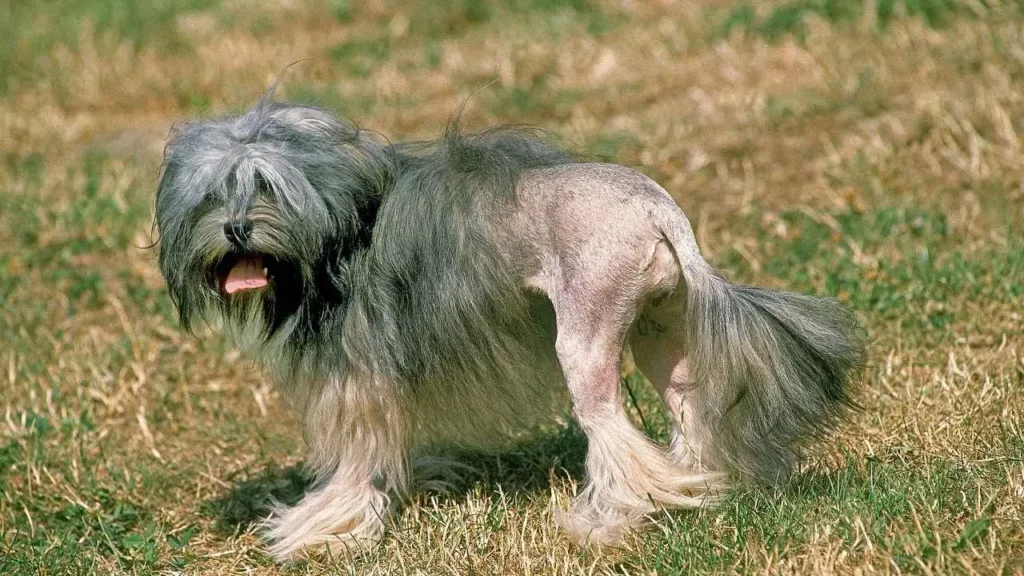
The Löwchen, also known as the “Little Lion Dog,” has a debated origin, with France, Germany, and Spain all claiming ties to its heritage. The breed dates back to the 15th century and was favored by European nobility, especially in France, where it was often styled with a lion-like haircut.
Despite its popularity in historic courts and even appearing in Goya paintings, the breed’s numbers dwindled during wartime. As noted by the Spruce Pets, thanks to a Belgian woman’s efforts and later breeders in Britain during the 1960s, the Löwchen was revived. The dog breed was eventually recognized by the American Kennel Club in 1999 under the non-sporting group.
Bred primarily as a companion, the Löwchen is affectionate, loyal, and thrives on human interaction. They enjoy both energetic play and relaxed cuddles, but can develop separation anxiety if left alone for long periods.
While they are known for their bold, watchful temperament, they may also bark excessively or display dominance, especially toward larger dogs. With proper early training and socialization, however, they generally become obedient and well-mannered.

This intelligent breed responds well to positive reinforcement and excels in various activities like carting, water trials, and even therapy work. While lively during puppyhood, adult Löwchens tend to be calm yet alert. They get along well with children but may need supervision around other pets or unfamiliar dogs due to their confident demeanor.
According to AKC ratings, Löwchens are excellent with young children but somewhat average in their tolerance of other dogs and strangers. These tendencies can improve significantly with early, gentle training. Harsh discipline is discouraged, as it can undermine their naturally eager and friendly personality.
9. Poodle
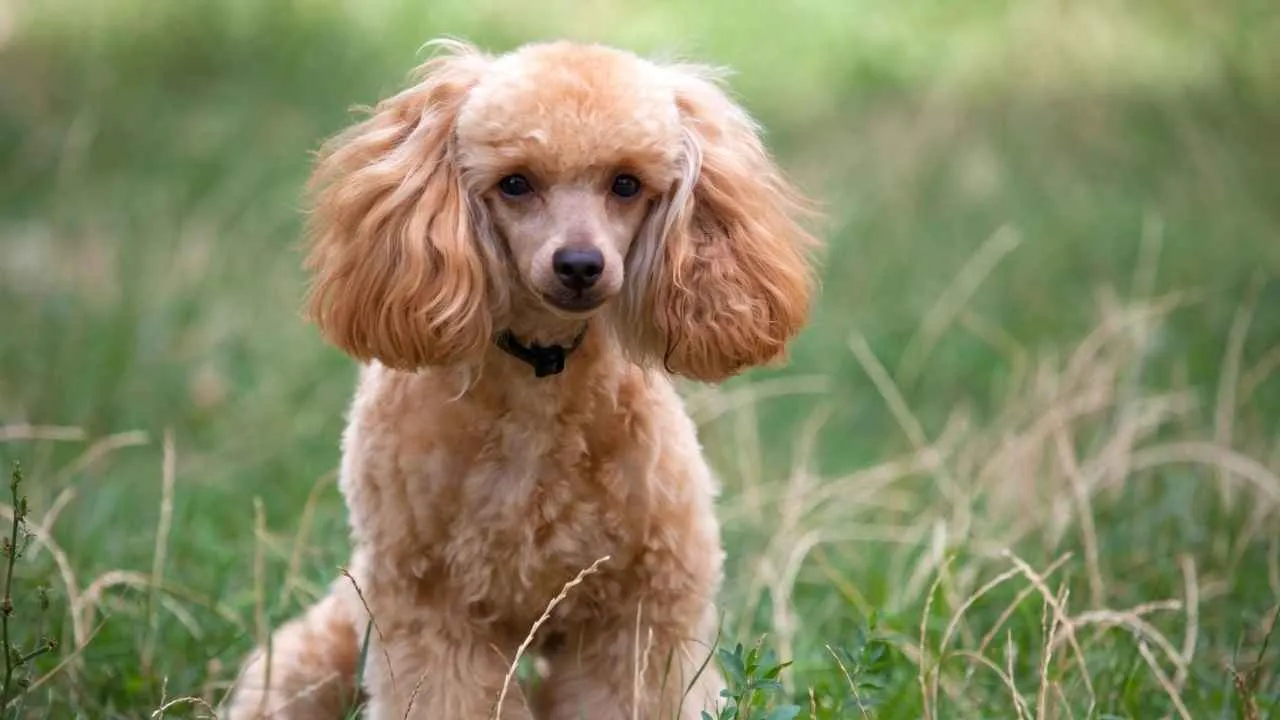
The Poodle, available in Standard, Miniature, and Toy varieties, is a highly intelligent, energetic breed with a reputation for elegance and versatility. Despite their aristocratic image and frilly show clips, Poodles are athletic and driven dogs originally bred as water retrievers.
As noted by WebMD, their German roots are reflected in the name “pudel,” meaning “to splash,” while in France, they’re called “Caniche,” or “duck dog,” hinting at their hunting origins.
All three size variants share a square, well-balanced build and a signature curly coat that’s low-shedding and considered hypoallergenic. While show dogs often sport elaborate grooming styles like the Continental clip, most pet owners opt for the practical Sporting clip.
These coats require regular grooming but shed minimally, making Poodles ideal for allergy-prone households.
Poodles are deeply people-oriented and thrive on interaction and mental stimulation. They are eager learners who excel in obedience, agility, and service roles. Positive, engaging training methods bring out the best in their highly trainable nature. However, without sufficient mental and physical stimulation, they can develop behavioral issues or separation anxiety.
An active household suits the Poodle best, as these dogs have a high energy level and love activities like long walks, swimming, and structured play. They particularly enjoy water, a trait that links back to their origins as water retrievers. Whether playing fetch or training for agility, they love spending time with their humans.
With a long history that spans from practical working roles to becoming companions of celebrities like Marilyn Monroe and Walt Disney, Poodles have proven to be adaptable and endearing dogs. They’ve long shed the stereotype of being “show dogs,” showing instead that they are fit for a wide variety of lifestyles and homes.
Conclusion
The best apartment-friendly dog breed combines loyalty, adaptability, and friendly dispositions. Breeds like Bedlington Terriers and Pembroke Welsh Corgis thrive with regular exercise and attention, while Greyhounds, despite their large size, are quiet and low-maintenance. Beagles and Chihuahuas bring playfulness and strong guard dog instincts, making them great companions.
Whether you seek a cuddle buddy or a dog with a piercing gaze, the right breed can offer the perfect balance of mental exercise, indoor playtime, and companionship for apartment living.


